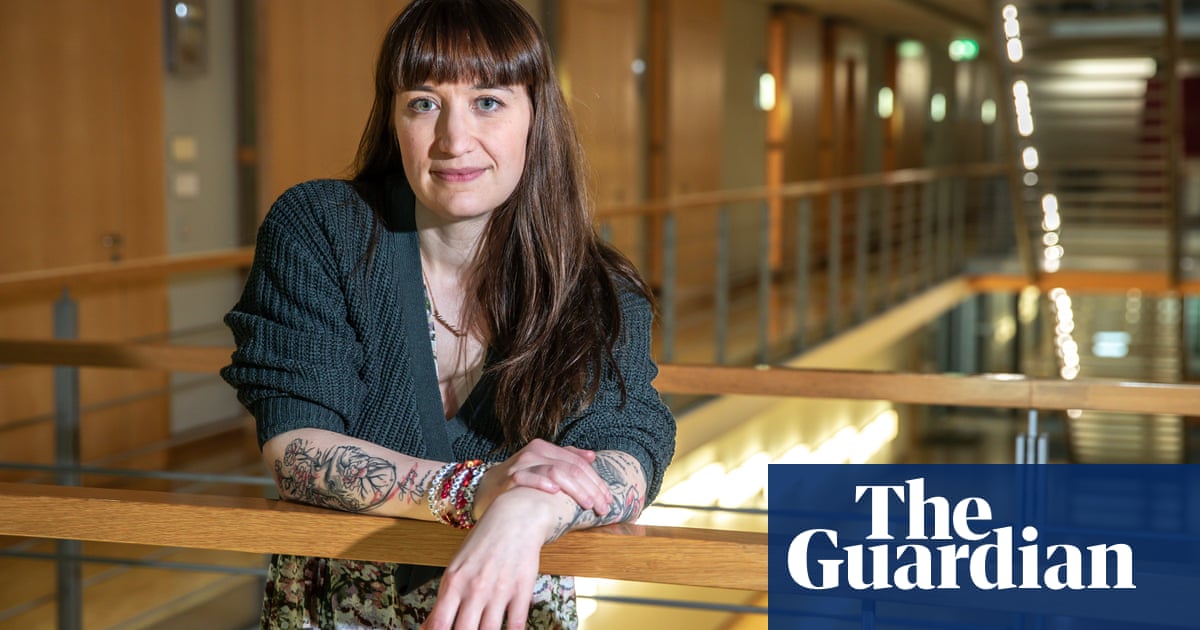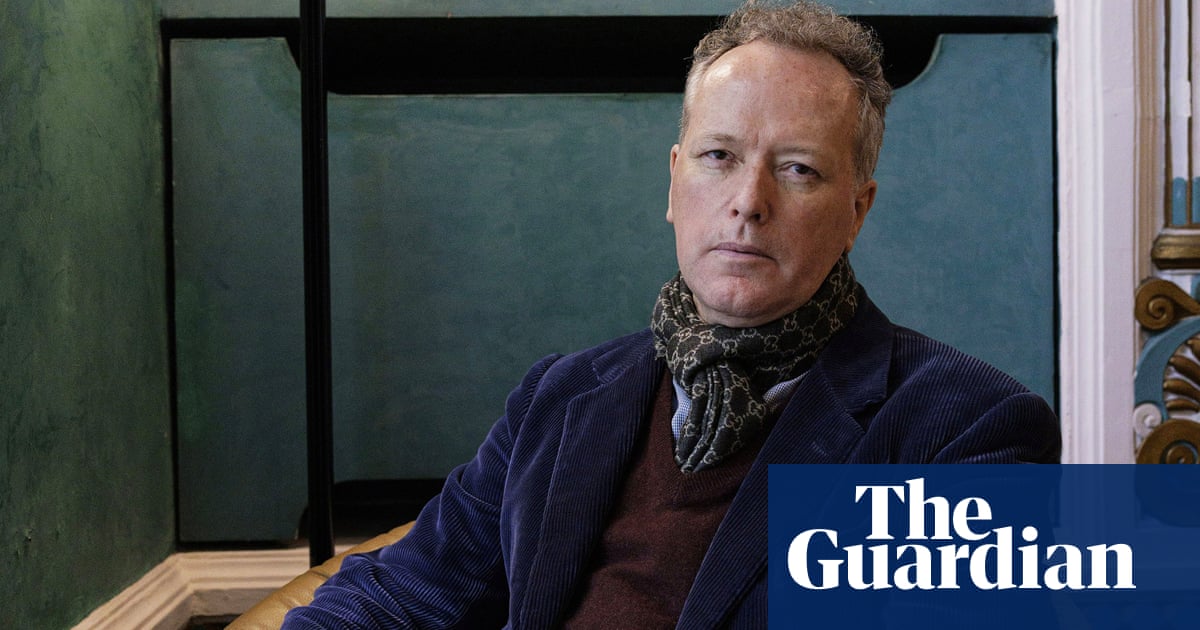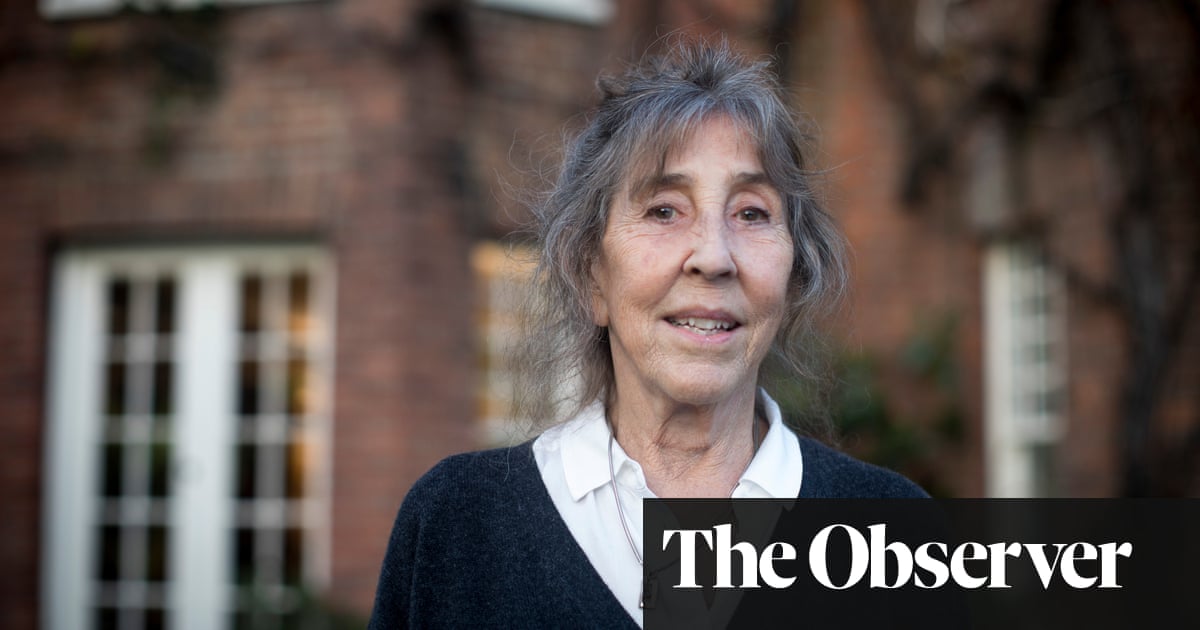I have long felt that kitchen objects can have a life of their own. Even so, I found this eerie. One August day in 2020, I was going to fetch clothes out of the washing machine when suddenly a cake tin fell at my feet with a loud clang. It wasn’t just any cake tin. It was the heart-shaped tin I had used to bake my own wedding cake. I wouldn’t have thought much of it except that it was only two months since my husband had left me, out of the blue.
Nearly 23 years ago, this giant metal heart had been brand new. My husband-to-be had told me he liked fruit cake but hated glace cherries. For our wedding, I decided to bake him a rich, dark fruit cake with no cherries and chopped-up dried apricots to take their place. There are photos of us cutting the cake together looking blissfully happy. We would soon be on our way to Venice for our honeymoon.
All these years, I kept the tin. We had three children and sometimes I used it to bake their birthday cakes: shiny brown hearts of chocolate sponge smothered in ganache. It lived in the bottom of a dresser in the hallway, where it was slowly rusting. I kept it there because it was too vast to fit in any of the kitchen cupboards. To give it away would have been unthinkable. It was a keepsake of our love.
At the back of my mind, I’d imagined that one day I would use the tin to bake an anniversary cake. In one of her books, the food writer Ruth Reichl gives a recipe for the giant chocolate birthday cake she made for her husband, Michael, the first year that she knew him – a cake so colossal it took four men to help her lift it to the car. Reichl calls it simply Big Chocolate Cake. I had a vague idea that this would be the cake I’d bake for our 25th anniversary. We were getting closer to this moment. I told people how lucky we were, and how we never argued.
As symbols go, a heart-shaped cake tin, bought for a wedding, is not exactly subtle. It’s Disneyfied romance, fashioned into a shiny object. I was only 19 when we met and 23 when we married. He was seven years older and was one of my college teachers, which didn’t seem to matter at the time.
One morning in June 2020, sitting on an ordinary park bench, drinking a cup of coffee, he said he didn’t love me any more, not “like that”. He never elaborated what “like that” meant. It didn’t seem real. I thought that divorce was something that happened to other people – my parents, for example, who split up when I was 14. At the time, this had been the biggest shock of my life. One New Year’s Day, my father announced over lunch that his resolution was not to live with our mother any more. I was the one who had casually asked whether anyone had any resolutions. For years, I felt I caused him to leave with my question.
My purchase of the heart-shaped tin suggests that I was urgently searching for a happy-ever-after: a sweet and unbroken heart. Of all my ex-husband’s excellent qualities, one of his greatest was – or so it seemed to me – that he was so steadfast. He never gave me a moment’s doubt about his loyalty. The morning of the day he left he brought me a cup of tea in bed, just as he always did, and I thanked him with real gratitude, just as I always did. When the tin clattered loudly to the ground, it echoed my own shock.

Certain kitchen objects become loaded with meaning in a way that we are not fully in control of. You can’t predict which will be the utensils you get attached to – the favourite mug, the spoon that feels just right in your hand – and which belongings decline over time into clutter. And then there are the objects that – even if they were made in some anonymous factory and bought in some anonymous shop – seem to carry with them a kind of magic. There is the plate that makes everything you put on it taste better, or the bowl you keep but can’t actually bear to use because it reminds you too strongly of the person who gave it to you.
What should I do with the tin heart now that its original meaning was ruptured? When I told the story of it falling on the floor to friends, they all, without exception, made the same suggestion: I should invest the tin with new associations! I should bake a cake for myself in it, the richest cake imaginable, and throw myself a giant divorce party. I was comforted by the kindness of the suggestion, but didn’t feel quite ready for this yet. Instead, I left the tin where it was. I walked past it multiple times a day and sometimes winced slightly when I remembered it was there – a clanging metal symbol of rejection.
I started to wonder whether the tin itself – and the cake I originally baked in it – was a powerful indication that our marriage was doomed from the start. Maybe a man who was so fussy about cherries was not the man for me.
But when I picked it up, trying to decide what to do with it, the tin felt as solid as it did 23 years ago, as if it were still waiting to be used.
I started looking for other people who had invested objects in their kitchens with strong meanings or emotions. The more I asked around, the more I saw that feeling emotional about kitchen objects was the rule rather than the exception, even for people who were not especially interested in cooking. I wasn’t alone in having intense and even magical feelings about the things I cooked and ate with.
Many people told me that they could still feel the presence of a lost parent or partner in their china cupboard. I met someone who said that the one object belonging to his mother that he and his siblings all wanted when they cleared her house was a glass salad-dressing maker. His mother never rinsed out the garlic at the bottom, just adding fresh garlic before pouring in the oil and vinegar, meaning that this vessel carried the garlicky essence of decades of shared meals. Another person told me that she had a very powerful sense of one of her ancestors, whom she had never met, because she had inherited her rolling pin. A friend told me that the only thing she now had left from her French grandmother was a rusty old herb chopper from long-ago Paris, where her family ran a brasserie. My friend never used this chopper herself, but every time she looked at it she could see her grandmother’s hands, alive and cooking.

Some of the people I spoke to said that they were not at all sentimental about kitchen objects, but then when they thought harder there was always at least one exception. One man told me that kitchen objects did not interest him, only to reveal that after his mother’s death he had held on to some tea towels and place mats because they seemed to carry the “texture” of her.
When people described their favourite objects, I noticed certain common themes emerging. Many of the most treasured objects were ones that they or people close to them had held in their hands and used daily – a grandmother’s wooden spoon, a mother-in-law’s butter dish decorated with a cow, a salt shaker inherited from a parent. Like pets or loved ones, these objects were cherished through daily touch. An excellent cook told me that when she walked past her Gaggia ice-cream maker – which happened every day – she would smile and sometimes even pat it because she had owned it for so long that it felt like one of the family.
On the other hand, people also described as special the kitchen objects that they hardly used at all: a fragile porcelain bowl, some precious crystal glasses passed down through the generations, a linen tablecloth that only came out once a year. Some of these belongings had become so special – so hallowed – that almost no meal was good enough to justify their use. Like religious relics, they were venerated from a distance.
There is more than one way of demonstrating that an object is special. You can learn to relate to old objects in new ways.
One of the people who helped me to start making sense of all this was Roopa Gulati, a chef and food writer who decided to start using her parents’ precious best china after her husband, Dan, was diagnosed with a brain tumour. Having spent nearly five decades feeling that this beautiful dinner service was too good to use – she stored it in the attic for years – Roopa suddenly decided that life was too short not to bring out the good china while she could. Faced with the imminent threat of Dan’s death, her diffidence about using the best china melted away. “If it smashes, it smashes” became her new mantra.
Roopa’s parents came from Punjab in northern India. She grew up in England, in rural Cumbria, with her brother and sister – the only Asian family in the village. Her father was an eye doctor. The clinic where he worked on Saturdays was next to a very expensive china shop and Roopa remembers that when she was about 11, he and her mother spent weeks looking at different sets of china before deciding on a purchase. It was 1975 and the whole set was “a huge outlay”, maybe £500.
A generation ago, buying a dinner service was a weighty decision, perhaps all the more so for immigrants who were acutely aware of the opinions of others. A woman who worked during the post-second world war decades in a big department store recalled that many of her customers in the china department came in monthly, buying a precious piece or two at a time – a couple of cups and saucers one month, a dinner plate the next – until the set was finally complete.
To those who owned them, laying out a special dinner service was a way not just to honour your guests but also to demonstrate what “best” looked like in your home. Roopa’s mother felt such pressure to get dinner just so for her guests that she laid the table two days before they arrived. Her beautiful dishes were a kind of armour with which, as a foreigner in this cold northern village, she shielded herself from the judgment of others.

When Roopa showed me one of the plates her parents had chosen, a set called Braemar by Royal Doulton, I instantly saw why they would have fallen in love with this particular set, which included vegetable tureens and bowls and platters along with plates. It was an elegant ceramic with a rare delicacy in colour and design: white in the middle, with a rim of silver followed by an olive-green ring and then two different geometric patterns. Roopa thinks that it must have reminded her parents of the Mughal designs of northern India.
We were talking about the plates over lunch at Roopa’s house in Pinner, south-west London, where she has lived for the past 20 years. She generously cooked me lunch, a feast of dishes from Indian Kitchens, a book she had been working on about the regional cooking of India. Dan joined us for the first course, a translucent broth of lamb scented with two kinds of cardamom and royal cumin, with fried onions and mint on top. It was only three months since Dan’s last stem cell transplant and he was still very weak. It felt like a miracle that he was home from hospital and in humorous spirits, despite his ordeal.
Roopa described the pit she used to feel in her stomach at the idea of breaking one of the Braemar pieces. Suddenly I remembered the “don’t touch” terror I felt as a child walking into any kind of shop selling fancy stuff with my parents. Roopa’s fear around the Braemar remained even after her mother died and she took possession of the whole dinner service. Then her father died, but still she kept the dinner service in the attic because the thought of breaking any of it was too awful to bear.
Roopa brought out some of her beloved Braemar plates, on which she served spinach and mustard greens cooked in copious amounts of butter, with flatbreads and finely sliced raw red onions on the side. It was a joy to be able to use the dishes so freely, she said. Her attitude to the dinner service changed immediately after Dan’s diagnosis. In the midst of her grief, she had started worrying about the unused plates up in the attic. She wanted the dishes to hold different foods and witness the conversations of another generation: her daughters’ children. I noticed that she was talking about her tableware as if it were alive.
As children, we may be taught that certain possessions are only for best, but what if today is all we have? “Best” doesn’t have to be saved for feast days or honoured guests. Each morning that Dan was alive was now a special occasion for Roopa. Using these shiny plates also became a daily treat that reminded her of her own worth: a way to celebrate her own existence even when she felt she had done little except visit Dan in hospital. She found herself using the Braemar to brighten her ordinary solitary breakfast of toast and marmalade – something her parents would never have done.
So many of us spend our whole lives denying ourselves the best things because the time is not right or we feel we haven’t earned them yet, or we fear that someone – probably our parents – will disapprove of us if we drop them. This attitude to objects sometimes goes along with a wider impulse of self-denial. This may be the legacy of hunger and rationing, or a religious childhood, or simply of the social attitudes of earlier generations. But if you don’t use the best china now, you may never use it.
Roopa realised that the best way to honour the momentous and costly decision her parents made in the china shop all those years ago was to enjoy the crockery, because now could be the best and only time. “Dad’s no longer there and Mum is not either. This is life.”
Some of the most poignant objects I found in my mother’s house when we were clearing it after she moved to a care home because of her dementia were two small platters made by Royal Doulton. They were in the bottom of one of the drawers where she kept her plates and bowls. These small oval-shaped platters – which dated to around 1910 – were decorated in dark, inky blue and bright green, with flower patterns done in fine lines using a delicate sepia brown, all against a creamy-white background. On the back of the platters it said “Matsumai”, along with the Royal Doulton mark. Both platters still had Gift Aid tags attached to them, suggesting that my mother had bought them from a charity shop and never used them.
I brought the platters home, along with various boxes of papers and bowls and books and other keepsakes to pass on to her friends and relatives. These platters were too distinctive and special to give away to a charity shop, even if this was where they had come from in the first place. But they didn’t feel like something to give her friends because they had no real personal association with her. She had never served anything on them or even got around to removing the tags and washing them.
For a long time, I forgot about the platters. It was only when we were distributing my mother’s stuff after her death in 2022 that I looked at them again. My sister did not want them, so I washed and dried them carefully and put them on a shelf with my other serving dishes, and started using them to serve some of my mother’s favourite salads. I realised I was trying to make food to please a dead person, which felt a little crazy.

My mother was a brilliant Shakespeare scholar who devoted decades of her life to understanding his sonnets. All she ever wanted was to be in the right, and to be loved. Often, especially after her divorce from my father, she seemed to feel that she was neither. When I served and ate food from the Matsumai platters, I wanted to bring her back so I could tell her that she was right to buy them and that I loved her.
When I was talking in this vein over dinner one night, my oldest son said, “You’ve forgotten how difficult you found Grandma,” and it was true. She was kind to her bones but was also a deeply anxious person. When some tiny detail went wrong – and in the normal run of life, tiny details are always going wrong – she would loudly exclaim, “Oh no!”, as if the thing simply could not be borne. She repressed many of her feelings (because her parents had taught her to do so) and made me feel that I must repress mine, too. It was only after she developed dementia and some of her inhibitions had fallen away that she was able to tell me and my sister directly that she loved us. When I hold the Matsumai platters, I yearn to have her back – all of her, even the parts that drove me mad.
Most of all, the platters make me feel how fleeting and sad life is. You buy these small treasures, hoping they will come in handy. You save them for something special. And then you die before the special event happens and they never get used.
But things can have a second life (and a third and fourth), even if people can’t. Roopa Gulati spoke of giving her family’s Braemar dinner service another chance of living. I did the same with my mother’s unused platters. The more I celebrated them and arranged food on them, the more I could stop them from being junk, even if she would never know.
When I finally decided to use the heart-shaped tin to bake another cake for my 50th birthday to share with my children, the tin was so much smaller than I remembered. In my memory, because of its emotional weight, it was vast enough to make a cake for dozens of people. But as I held it in my hand to scrub off the rust and bake with it, it didn’t look so very large.
It was a relief to be able to look at the tin again without wincing. As with Roopa and her dinner service, I was happy that this object had the chance of a second chapter and new associations. What’s more, I was managing to look back at my own past more kindly. In the early days of separation, all the years of my marriage became polluted in my mind. If our relationship could end like this, it must never have been good. But now I could see that the love and hope I felt when I bought that shiny tin were also true.
The magic of things is that they can live more than once, passing faithfully through many pairs of hands, gaining different meanings each time. Our most significant kitchen objects can keep us connected with the dead and the absent, so it’s no wonder we sometimes act as if they were charmed.
I had a second celebration with some friends, old and new, a few months after my 50th birthday. I realised that my mother’s presence, far more than my ex-husband’s, was the one that hung over my kitchen. He had chosen to go, whereas she had left unwillingly.
A young Syrian chef called Faraj Alnasser, a friend, came to cook a feast of Syrian food, including vegetarian kibbeh filled with oyster mushrooms and served on a warm yoghurt sauce with dried Iranian mint. Faraj had been telling me about his own most precious kitchen objects: two long metal vegetable corers which kept him connected with his mother and grandmother although they lived several thousand miles away in Cairo. These corers took Faraj back to the scents and memories of a peaceful Aleppo that no longer existed.
Faraj made a feast of Syrian food, including the most incredible cheese scones seasoned with dill and za’atar, peach salad with tahini and lime, and a cucumber salad with fine strands of Syrian cheese and herbs.
We were looking for plates for the cucumber salad when I showed Faraj the Matsumai platters. “Yes!” he said. “These are perfect.” Cucumber was my mother’s favourite vegetable and she would have been so cheered to see the green of the cucumber against the blue-black of the plate.
At the crematorium nearly two years earlier, I had watched her poor little coffin taken away. Fear No More the Heat of the Sun from Shakespeare’s Cymbeline was one of the songs at her funeral. “Fear no more the lightning flash, / Nor the all-dreaded thunder stone.” She would never again feel the warmth of the sun on her face but she was also free at last from the distress of dementia, which had made her so frightened.
Yet looking down at the pale cucumber on the dark ceramic, I had the strangest feeling that she hadn’t really left after all. She was still vividly there in the pattern of that old plate, which had once caught and pleased her eye as it now pleased mine. Even in our supposedly rational age, this is the power of objects; they keep those we miss in the room with us. A plate or a tin may not be much but it can be something to hold when hands are gone.
Adapted from The Heart-Shaped Tin: Love, Loss and Kitchen Objects, published by Fourth Estate on 8 May. To support the Guardian, order your copy at guardianbookshop.com. Delivery charges may apply

 5 hours ago
5
5 hours ago
5













































